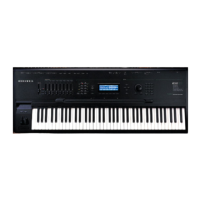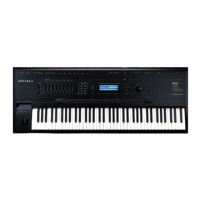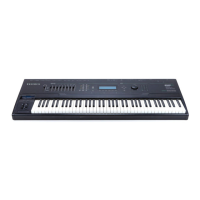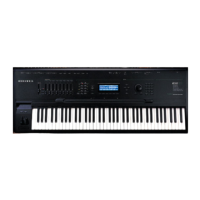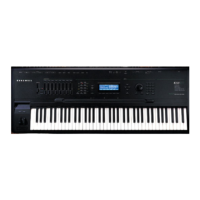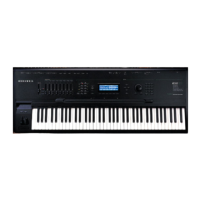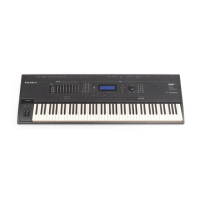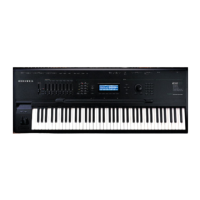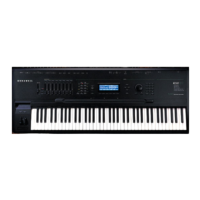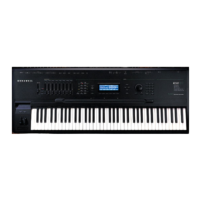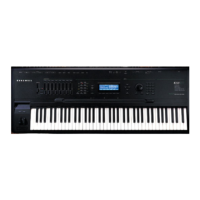Some ideas for using Live Mode
6 910309
Sustained Notes and Loops
If the incoming signal is a single, sustained pitch, like a saxophone note, then you can consider
the Live Mode keymap to be playing a normal, looped sound. In this case, the fact that an
upward bend jumps back a few seconds is no big deal because the sound hasnÕt changed much
during that time.
With this technique, melodies or chords can be played based on a segment of a live
performance. Keep in mind that, unless your incoming signal is a C, notes and chords played
on the K2500 keyboard will be transposed relative to the incoming pitch. Also remember that a
rhythm pitched an octave down will play at half the speed, while one pitched an octave up will
play twice as fast. Fifths produce a 3-against-2 pattern. To keep some sort of relative sync with
the live signal, you may want to experiment with re-triggering the notes, perhaps using the
arpeggiator, at some appropriate tempo.
If the passage you want to play is long, and the input signal isnÕt so longÑsay, the sax player
needs to take a breathÑyou may run into a problem as the K2500 tries to play the buffer where
the audio was interrupted. If the input signal is mono, you might be able to overcome this by
using a delay line to ÒholdÓ the signal. The delay line could be part of V.A.S.T., or it could be an
external device, but either way its output is sent back to the K2500 through the unused Live
Mode input channel.
Chord Progressions
Record a few bars of block chordsÑall notes under C4Ñinto the sequencer, using a simple
quarter-note or half-note pattern. What sound you use doesnÕt matter. Now replace the
Program on the recorded track with the LiveMode Default Program. Play back the sequence
(you will probably want it to loop), and at the same time play single notes from an external
instrument into the K2500, in the same rhythm as your recorded chords. If you change the notes
on the instrument, the chords will transpose. If you play intervals or chords, you're on your
own as to the consequences!
Feedback
Live Mode gives you the ability to feed back a live signal into itself, similar to pointing a
microphone at the speaker it's sending audio to. Before you hook anything up, turn the volume
down very low (but not necessarily off, but very, very low).
Now go to the Sample page and choose Internal as the Source. Go to a multi-layer ROM
Program of your choice, and go to the Import page. Import Layer 1 from LiveMode Default.
Play one note, then a few. As you play more notes, the noise will build up. YouÕll have a better
time controlling the feedback loop if you have a healthy delay, with no dry path around it, in
the loop. Perhaps add a little modulation of the loop to provide some pitch shifting, a big
reverb, and a compressor to keep from blowing your ears out. Inject a little something from the
synthesizer to get things startedÑand you are instantly transported to an alien dimension.
For more complexity, split the incoming signal and run it through multiple V.A.S.T. layers in
parallelÑyou can use up to 32, each one processing, panning, and routing the signal differently.
You can crosslink the inputs and outputs (right into left, left into right) to create a double
feedback loop for even more fun.
Your ideas?
If you have Internet access, please join our mailing list and exchange ideas with other Live
Mode fans. We will also be putting information about Live Mode on our Website:
www.youngchang.com.
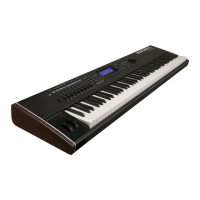
